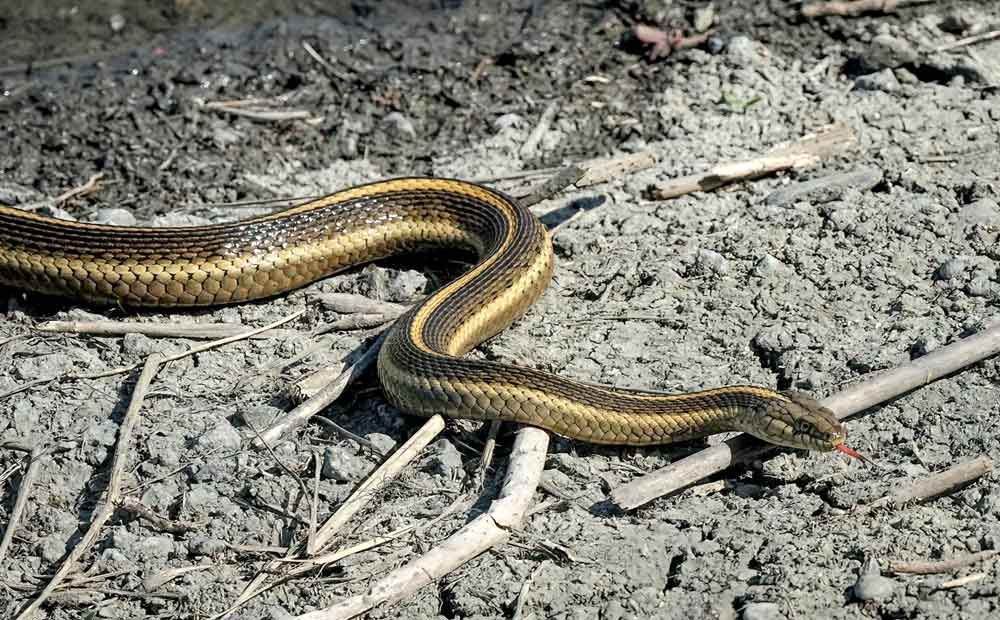The giant garter snake feeds on small fish tadpoles and frogs and is active during the day.
California Gov. Gavin Newsom has named the giant garter snake (Thamnophis gigas) as the official state snake. Senate Bill 765 by Sen. Roger Niello (R-Fair Oaks) sought to establish the snake as the state snake, citing the reptile’s decline in the state by more than 90 percent in the last 100 years that led to its listing as threatened under the California Endangered Species Act in 1971 and the Federal Endangered Species Act in 1993.
Known only to occur in California’s Central Valley, the giant garter snake (Thamnophis gigas) reaches more than five feet in length, making it one of the largest garter snakes in Thamnophis genus. It is olive to brownish in coloration with a yellow or orange stripe that runs down the length of its back. It also features two lighter colored stripes that run along each side of its body. It inhabits the edges of large flood basins, freshwater marshes and tributaries in the Central Valley of California.
Their range runs from Butte County in the north of the valley to Kern County in the south. They can also be found in agricultural wetlands as well as irrigation and drainage canals in rice fields and nearby uplands. According to the U.S. Fish and Wildlife Service, just five percent of its historical wetland habitat acreage is left.
The giant garter snake feeds on small fish tadpoles and frogs and is active during the day. Threats to the giant garter snake include habitat loss, fragmentation and degradation, invasive aquatic plants, climate change, including flooding and drought, and floods.



